
Most people will be aware of the notorious traditional superstition that a witch can be detected by throwing her (or more rarely, him) into a body of water. If she floats, then the water has rejected her, and she is guilty. If she sinks, then it has accepted her and, if she can be hauled out before she drowns, she is innocent.
Many fewer will know that the throwing of suspects into water is first recorded in the law code of the Babylonian king Hammurabi, almost 4,000 years ago. This is just one illustration of a broader truth: that the beliefs concerning witchcraft which underpinned the infamous early modern European witch trials, in which tens of thousands of people were executed, have ancient roots. Without understanding those roots, it is impossible to understand the whole history of attitudes to witchcraft in Europe.
It should be recognized at the start of such an understanding that in the modern world, the term 'witchcraft' has various different meanings and associations, some neutral or positive. The sense in which it is employed here is the one most commonly used in English until recent times, which is also the most negative and hostile, and lethal. It defines witchcraft as the use by human beings of uncanny power, of the kind traditionally classed as magic, to harm other people.
ALLIANCES WITH SPIRITS
The ancient Babylonians certainly believed in and feared such a power, and prescribed the death penalty for those thought to use it. They also developed a large number of spells to counteract it and had an associated belief in evil spirits operating in the natural world, who hated humans and wanted to harm them: entities for which Europeans would later adopt the word 'demons'. In Babylon, it was believed that wicked people made alliances with these spirits in order to torment and destroy their fellow humans.
Denne historien er fra April 2022-utgaven av History Revealed.
Start din 7-dagers gratis prøveperiode på Magzter GOLD for å få tilgang til tusenvis av utvalgte premiumhistorier og 9000+ magasiner og aviser.
Allerede abonnent ? Logg på
Denne historien er fra April 2022-utgaven av History Revealed.
Start din 7-dagers gratis prøveperiode på Magzter GOLD for å få tilgang til tusenvis av utvalgte premiumhistorier og 9000+ magasiner og aviser.
Allerede abonnent? Logg på
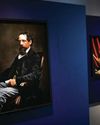
'Dickens's evocation of the fears, excitement and confusion of childhood is peerless'
DR LEE JACKSON ON WHY CHARLES DICKENS REMAINS RELEVANT TODAY
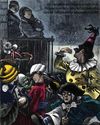
THE AUTHOR GOES ABROAD
Dickens expanded his horizons and boosted his fan-base by venturing overseas - but global fame came with a cost
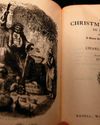
REVIVING THE FESTIVE SPIRIT
A Christmas Carol wasn't just a bestseller - it changed the way that Britons chose to mark the festive season

GIVING THE POOR A VOICE
From Hard Times to Oliver Twist, Charles Dickens used his pen to help illuminate the lives of the less fortunate

A JOURNEY THROUGH DICKENS'S LONDON
The works of Charles Dickens are synonymous with visions of Victorian London. We talk to Dr Lee Jackson about the author's love of the capital, and the locations that most inspired him
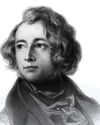
EXCEEDING EXPECTATIONS
Dr Lee Jackson chronicles Charles Dickens's journey from down-at-luck teenager to titan of Victorian literature

GIFTS, TREES & FEASTING
We take a journey through the photo archives to reveal how Christmas and its many traditions have been celebrated over the years - and around the world
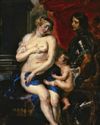
WHAT GREAT PAINTINGS SAY
We explore the story behind an allegorical painting that celebrates the triumph of love over hate, peace over war
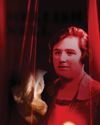
HELLISH NELL
Malcolm Gaskill delves into the life of Helen Duncan - the fraudulent Scottish medium whose ectoplasm-filled seances saw her ending up on the wrong side of the law

7 THINGS YOU (PROBABLY) DIDN'T KNOW ABOUT THE WHITE HOUSE
Presidential historian Dr Lindsay M Chervinsky reveals some of the most surprising facts about the world-famous US residence